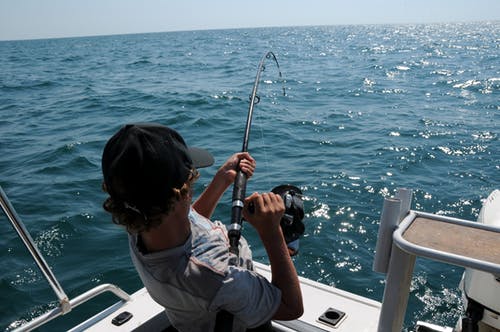
In this day and age of technology and computers, it’s refreshing to return to basics and rediscover the time-honored pastime of fishing. Fishing relieves stress by allowing you to spend quality time with nature. Nature has been proved in research to improve a person’s mood and lessen stress. If you’re looking for a fantastic, out-of-the-ordinary fishing destination, consider Homer Alaska. The state features some of the world’s top saltwater, freshwater, fly, and ice fishing.
An Introduction To Homer Alaska
Homer is located on the Kenai Peninsula’s southern tip, at the terminus of the Sterling Highway. The Homer fishing lagoon, also known as “The Fishing Hole,” is located on the Homer Spit, a peninsula that juts out into Kachemak Bay for 4 1/2 miles. This bay is one of the world’s most productive marine habitats, featuring world-class salmon and halibut fishing Homer, Alaska has to offer.
“The Fishing Hole” began as an artificial lagoon near the Homer Small Boat Harbor, intended to be utilized as a barge refit facility. In 1984, the Division of Sport Fish started stocking king salmon smolt in the vacant lagoon to build a bank-fishing “terminal” leisure fishery.
In the late 1980s, a coho salmon smolt-stocking program was initiated to improve fishing prospects. The yearly king and coho salmon stocking have continued. The city increased the lagoon’s area in 1994 due to the success of stocking operations and the location’s appeal.
Four Fun Facts About Homer
Are you planning a trip to Homer, Alaska? It’s always a good idea to become acquainted with your vacation destination before you arrive. Homer’s fascinating background is undeniably admirable.
1. Inheritance of Native American Culture
The Inuit tribe was the first to settle in Homer’s time, followed by the Tanaina tribe. If you want to learn more about Homer’s indigenous cultures and customs, go to the Bunnell Street Arts Center. They are committed to decolonizing and acknowledging indigenous territory, and they do a fantastic job of presenting indigenous stories and enriching indigenous art forms and traditions.
2. Homer Is Named After A Real Person.
Homer was named for its founder, Homer Pennock, who founded the town in 1895 as a gold prospector, mining company promoter, and con man. The town was a thriving coal-mining town until the mines closed in 1902. Because of this failure, the town was virtually abandoned until its next major boom: fishing and canning.
3. Fishing Is Homer’s Most Important Economic Industry.
Homer, also known as the “Halibut Capital of the World,” is a renowned resort for seafood lovers. Fishing has been Homer’s longest-running industry since its inception in 1910-1920. According to locals, “five hundred and twenty residents have commercial fishing licenses, and every summer, the town is inundated with seasonal employees coming to staff the many salmon canneries.” That is a lot of fishermen and women.
4. Kachemak Bay State Park Was The First State Park In Alaska
Alaska’s first designated state park was Homer’s Kachemak. The park was formally added to the National Parks system in 1970 and is one of the country’s largest, comprising 400,000 acres. Kachemak Bay State Park is a must-see for visitors to Homer, with activities ranging from fishing to hiking to bear sightings. Are you interested in visiting Alaska’s first state park? click here to book a trip.
Conclusion
Homer is a remote outpost on the Kenai Peninsula, seemingly at the end of the world. Few places can compete with the allure of this “Cosmic Hamlet by the Sea.” Whether you’re exploring the water in quest of gigantic halibut or just having a good time, one thing is certain: this is a trip you’ll remember for the rest of your life.

